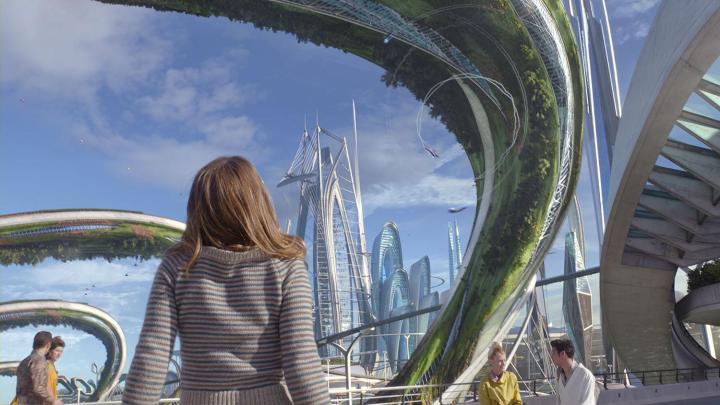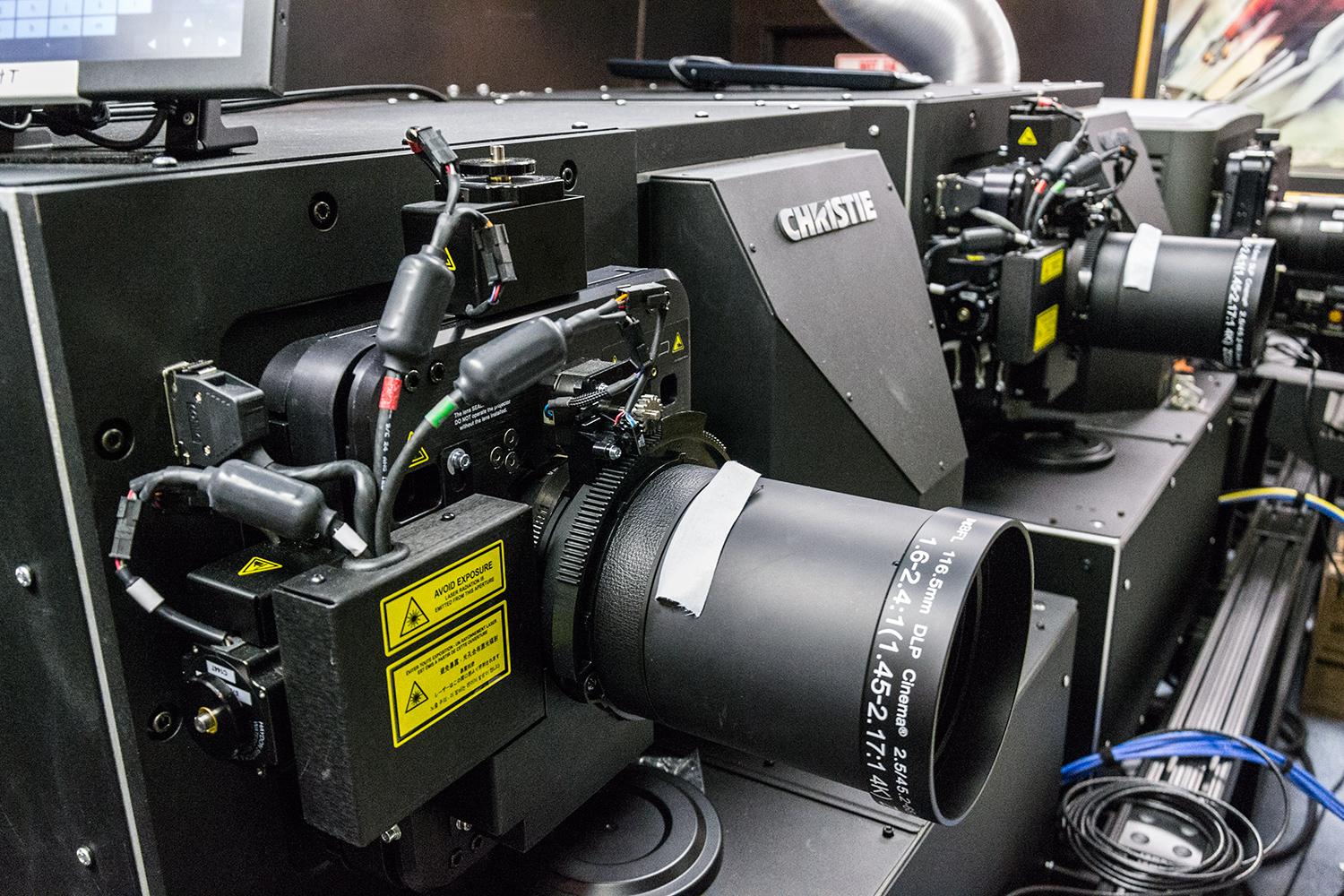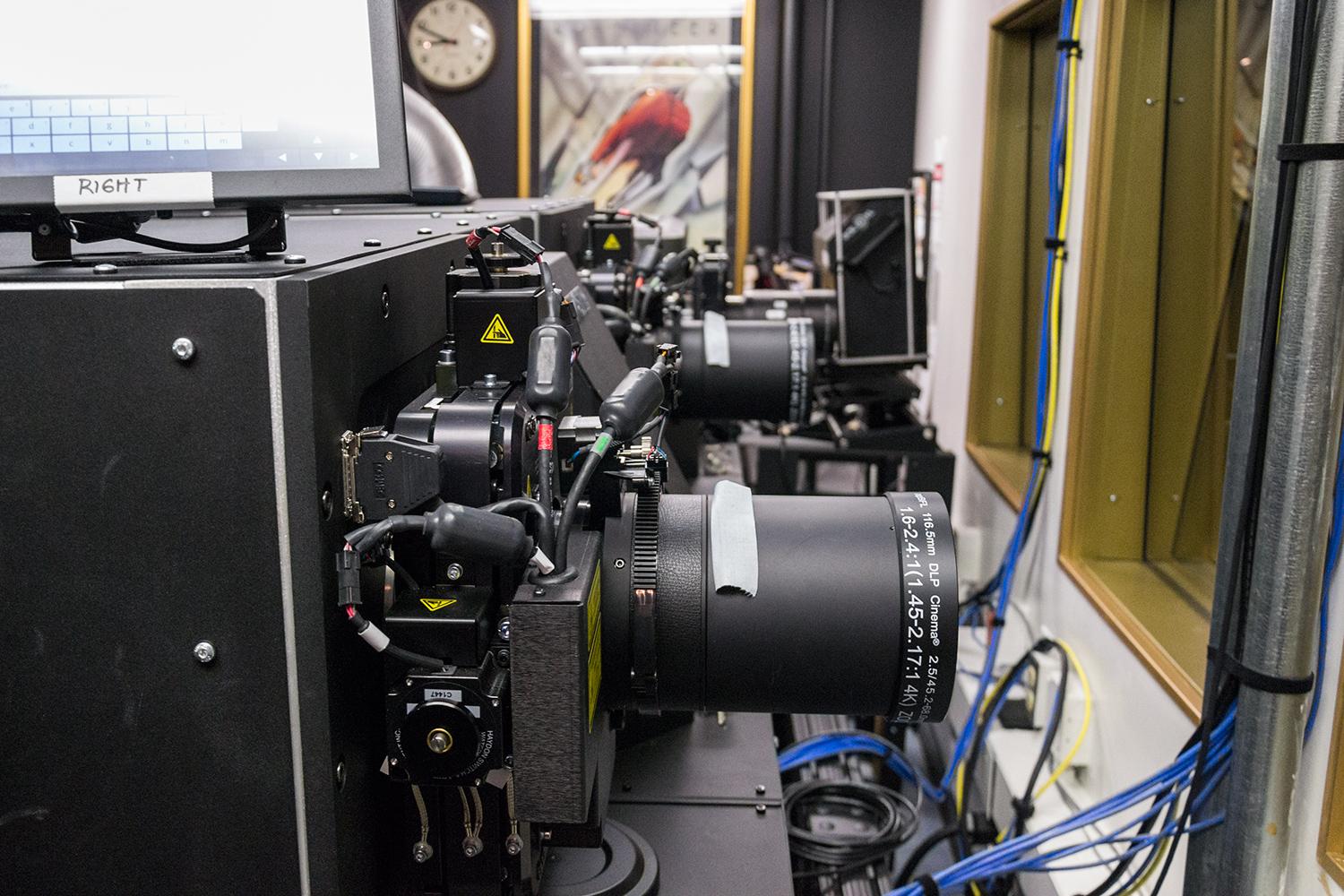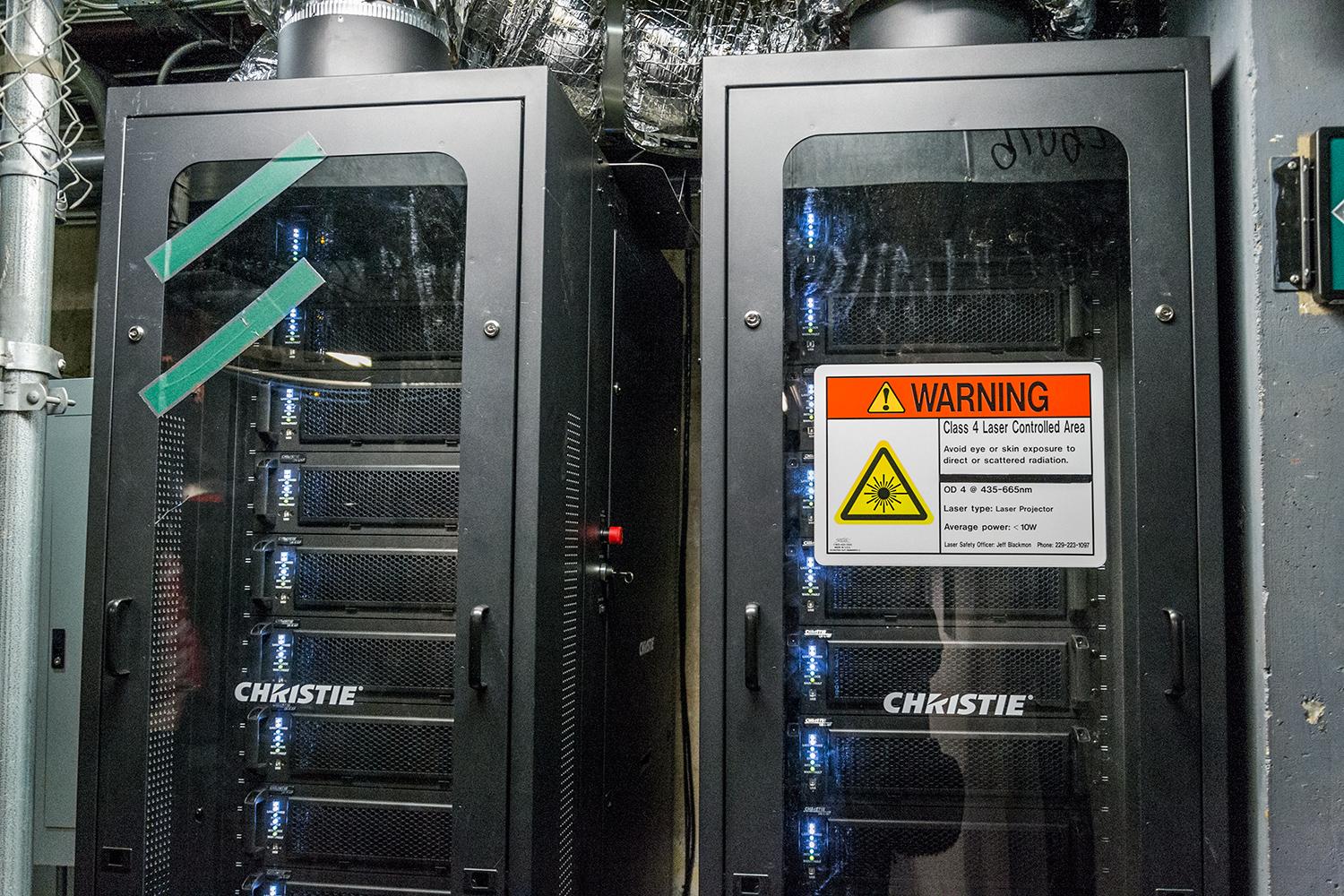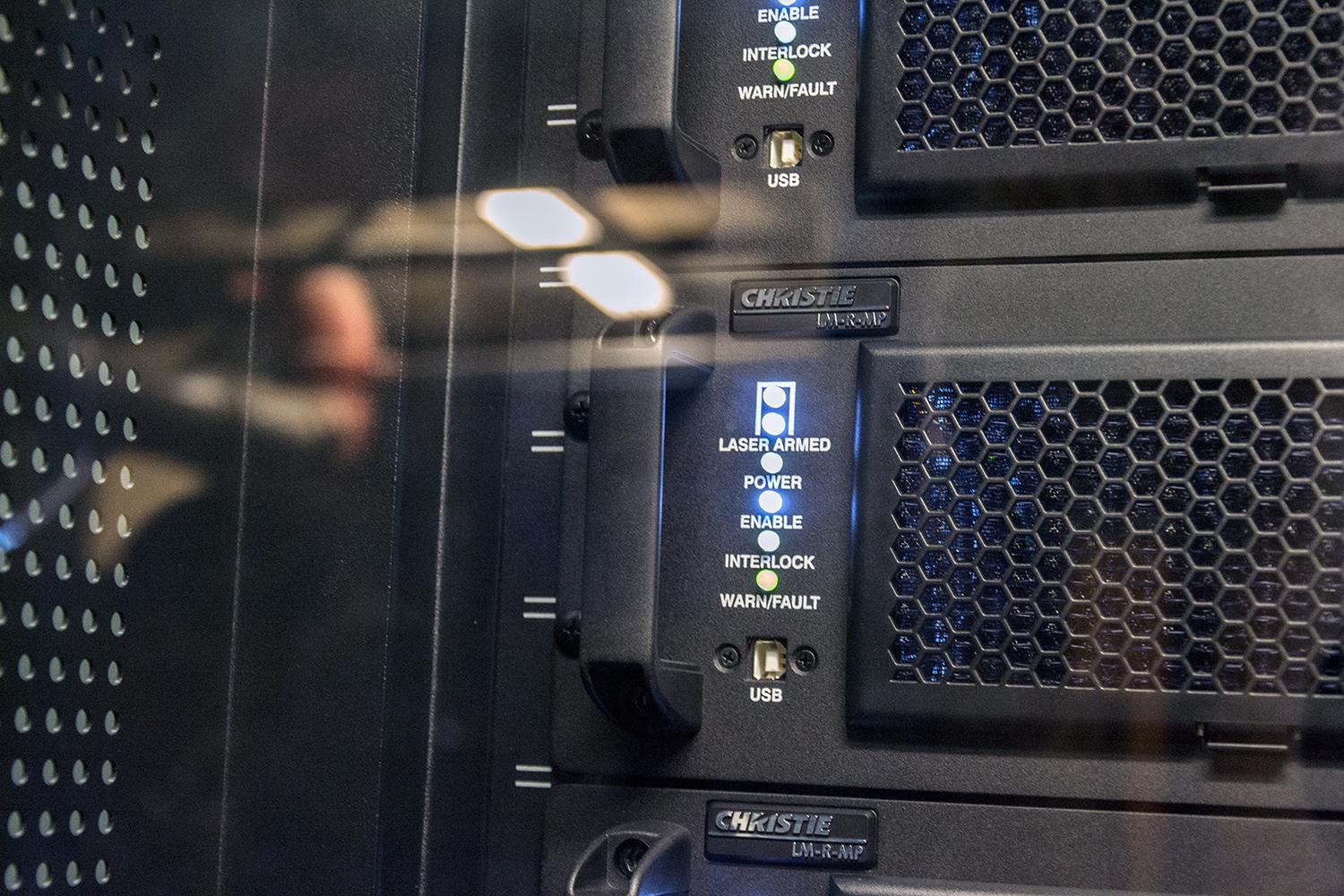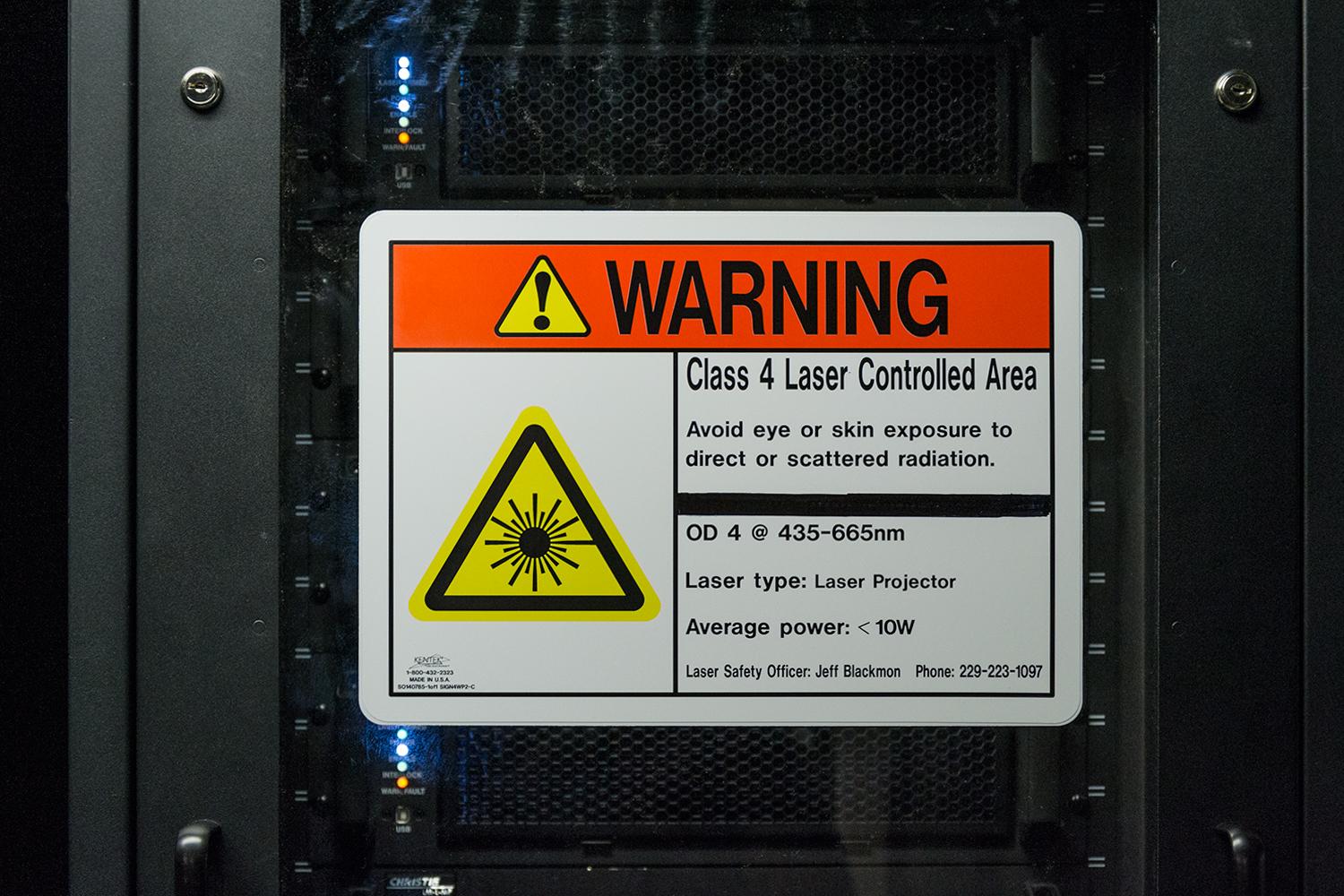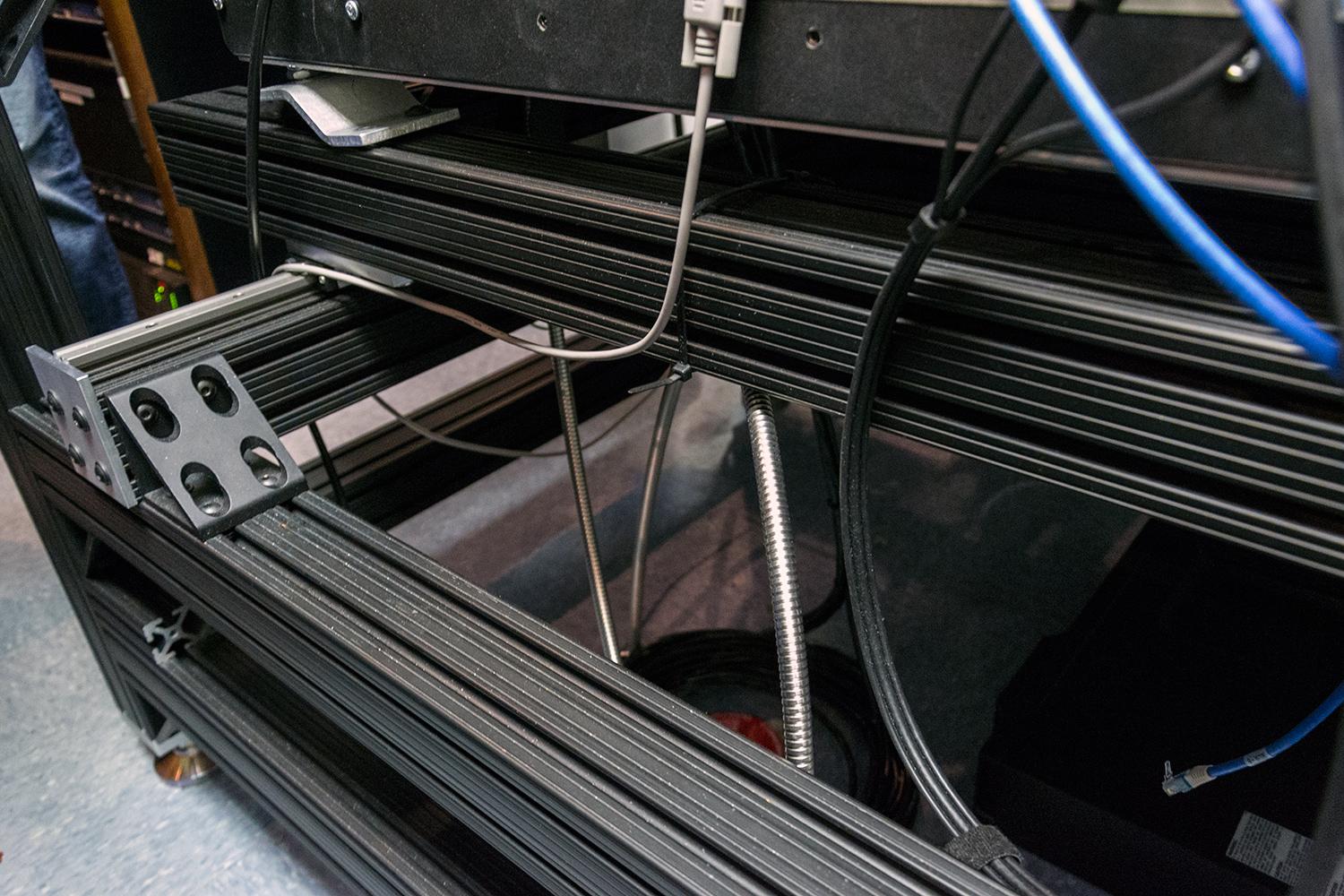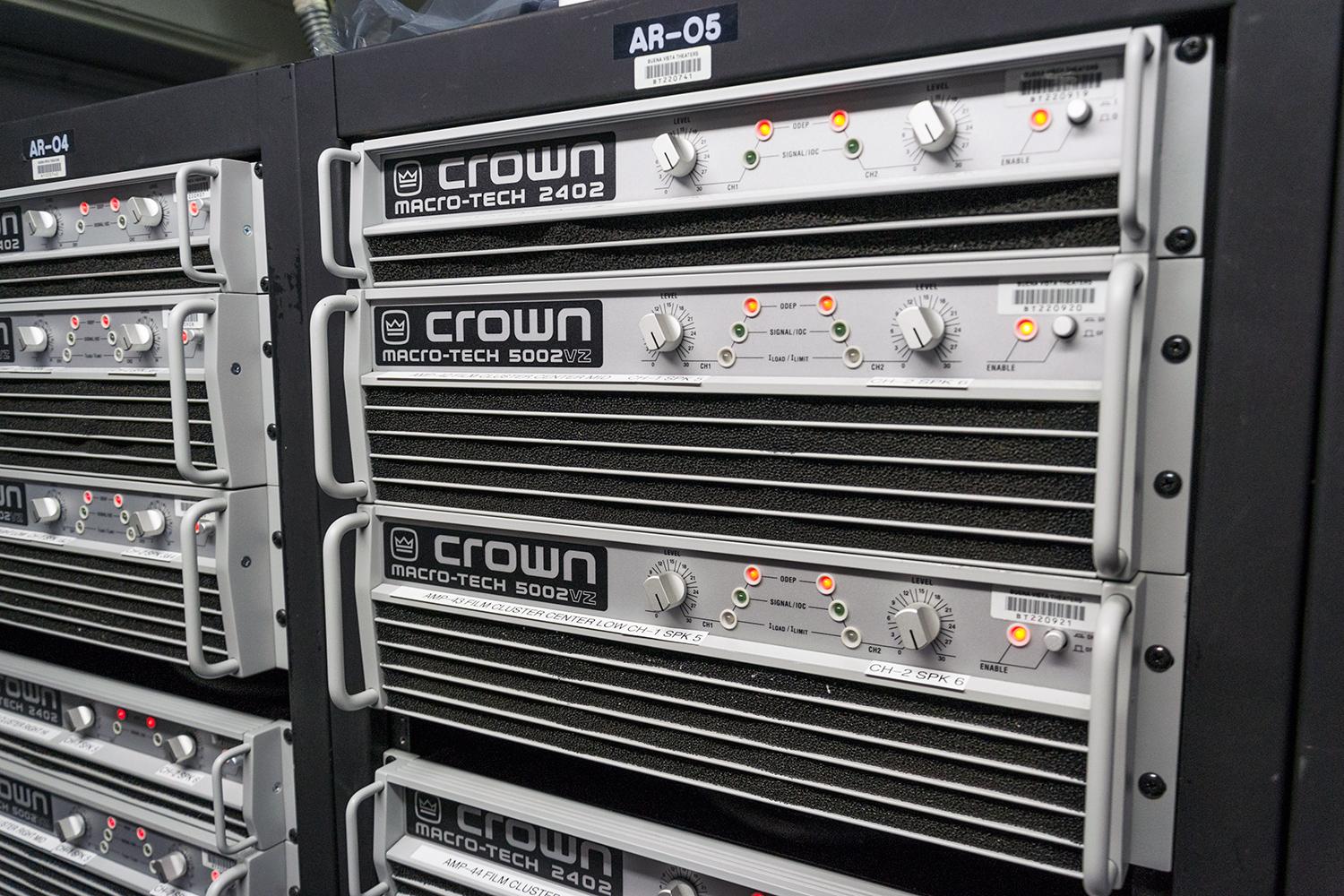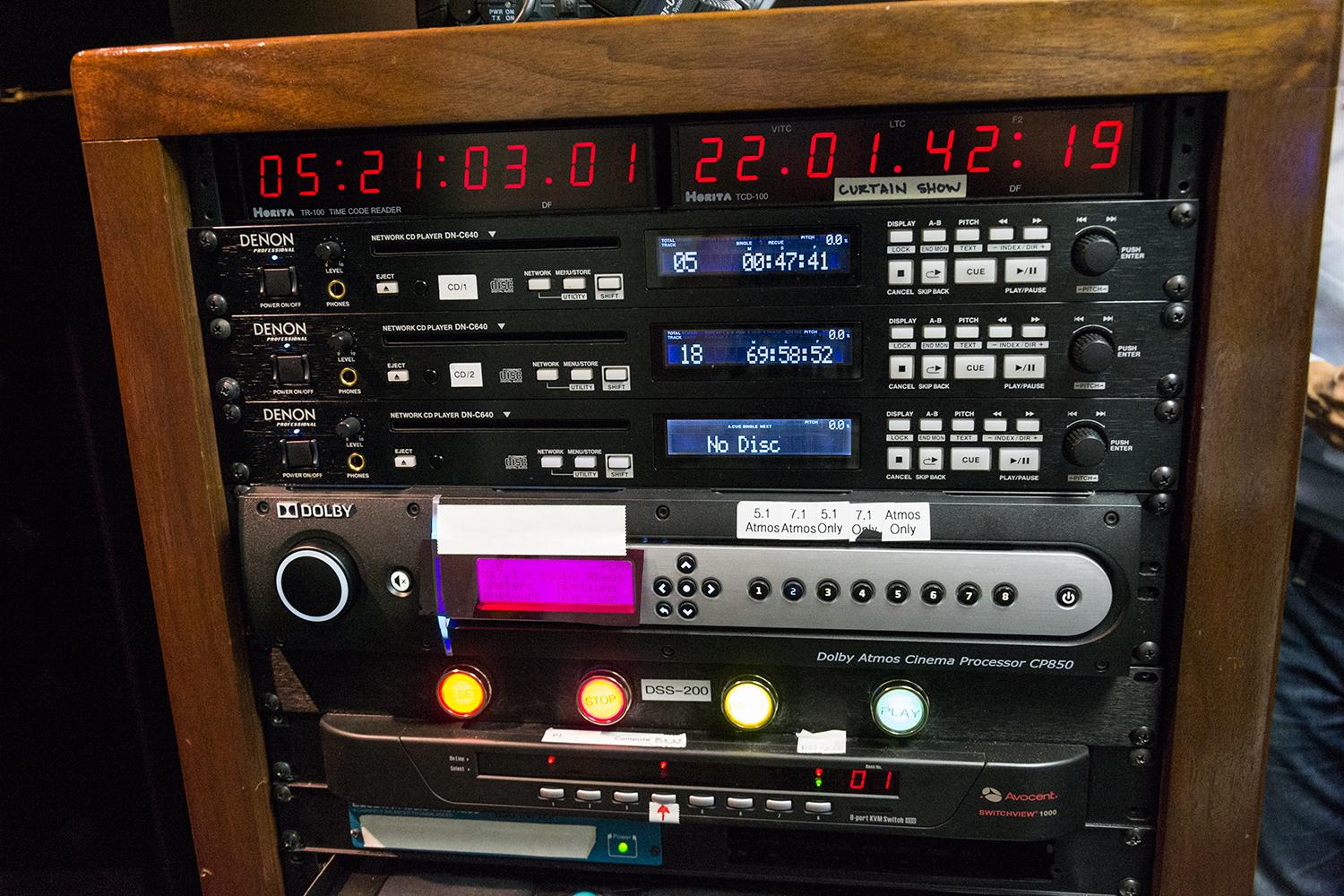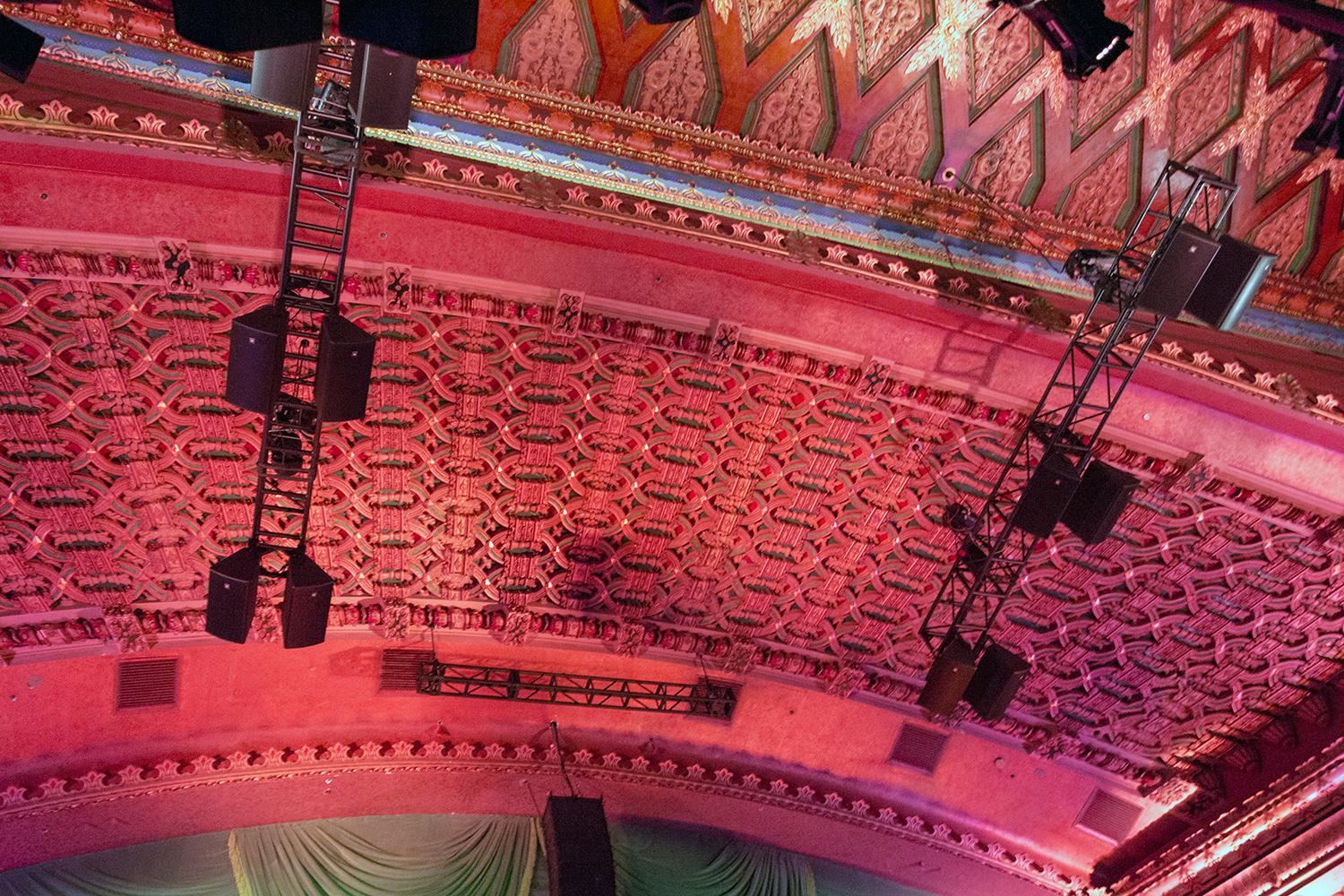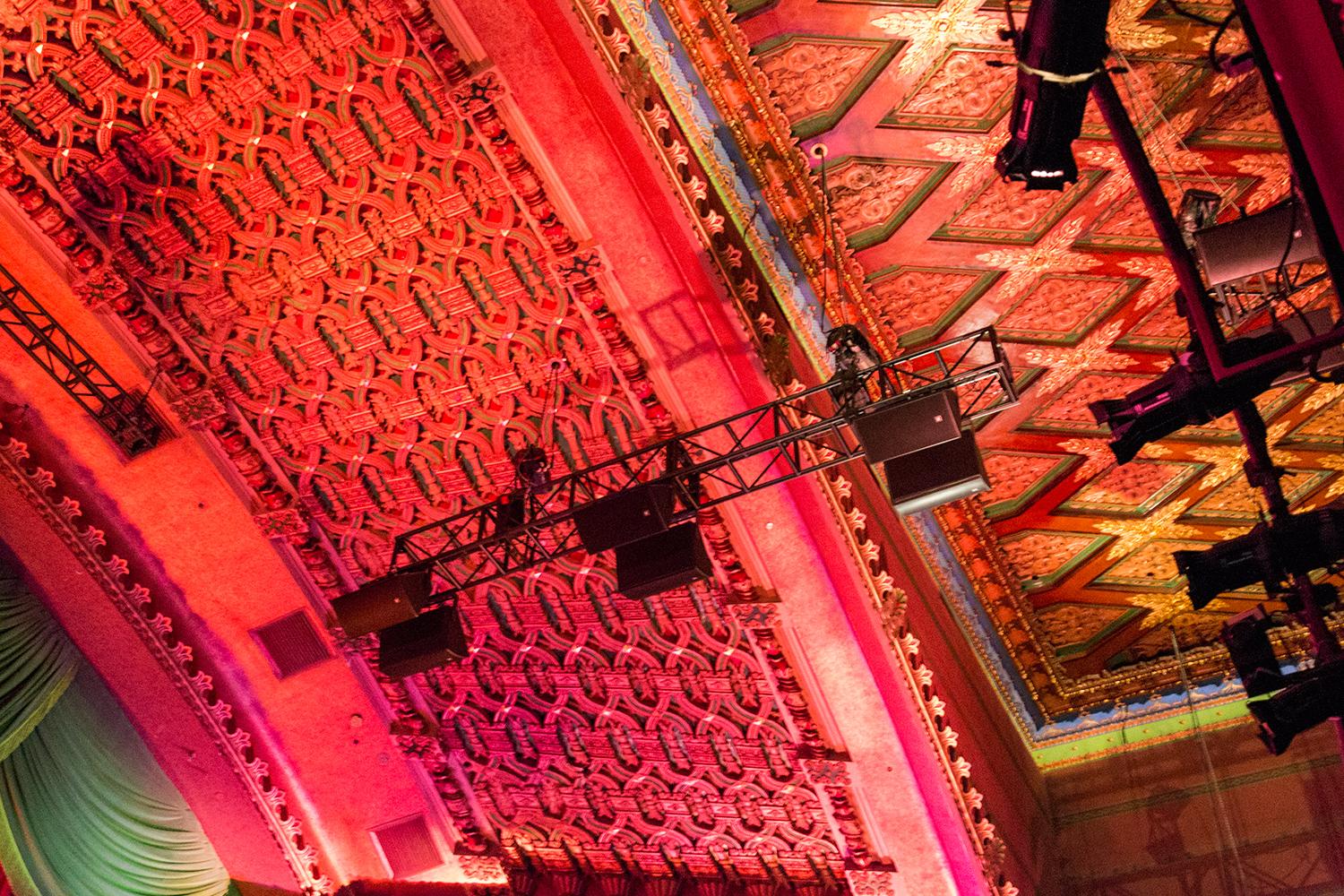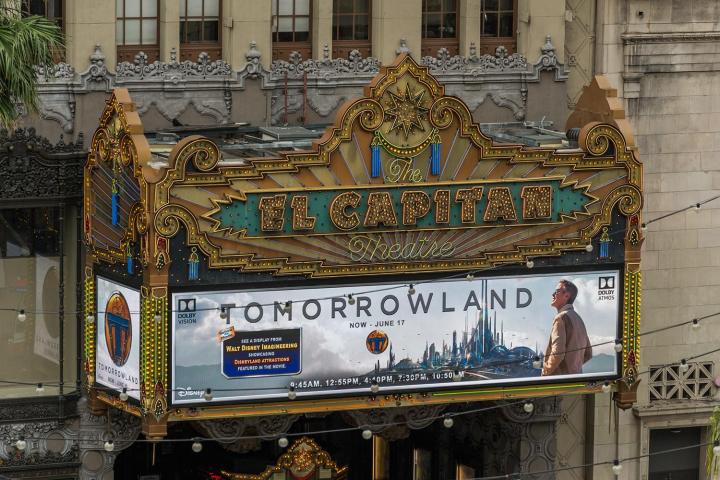
Disney’s historic El Capitan theater is one of five theaters in the world to meld Dolby Vision and Atmos together for a mind-blowing experience.
I’m smack dab in the middle of Disney’s fantastical visual spectacle, Tomorrowland, and I can’t stop marveling at the glinting red buttons on the shirt of Britt Robertson’s Casey Newton. I’m transfixed by this mundane detail, not because the shirt is special, or the movie terrible, but because the film is being served up by perhaps the most advanced projection technology in the world, a brainchild of Dolby labs called Dolby Vision.
Married with Dolby’s groundbreaking surround sound technology, Dolby Atmos, the two combine to create Dolby’s grand plans for the theater experience of the future. It’s a brand new way to watch movies. And it’s designed to do nothing less than blow your mind.
Tomorrowland is chock full of dazzling images, from jet packs cascading through the sky, to Stargate-esque portals blistering with electrical sparks.
I’m viewing this new cinematic breakthrough at Disney’s historic El Capitan theater in Hollywood, one of five theaters in the world to meld Dolby Vision and Atmos together. While Atmos has been creeping into theaters since 2013, Vision is the new hotness, courtesy of a highly-advanced laser projection system Dolby created in partnership with Christie Digital projectors. The image is mixed through myriad technologies and treated by Dolby’s special processing to beam the clearest, brightest, most colorful 4K picture on the planet. And the resulting picture for Tomorrowland, the first film ever mastered for Dolby Vision, is stunning.
Helmed by visual mastermind Brad Bird (The Incredibles, Mission Impossible: Ghost Protocol), it’s hard to think of a more perfect vehicle for the premiere of Dolby’s new tech than Tomorrowland. Based around an Oz-like exploration of a fantasy world (plucked from a Disney theme ride), Tomorrowland has no shortage of dazzling images, including jet packs and flying cars cascading through a deep-blue skyline, divers dropping through a succession of glittering swimming pools suspended in air, explosions, rocket ships, and Stargate-esque portals blistering with electrical sparks.
However, while the brilliantly-crafted alternative world is the film’s centerpiece, even the most mundane subjects look striking with Dolby Vision. Think natural sunlight dousing vividly defined faces, shadowy black levels exposing every detail, and an array of colors so diverse they make images from standard digital projectors seem fuzzy and dull. Every image is laid out to explore, from a searing boat light in an inky black tunnel, to a tiny fleck of lint on the cheek of Raffey Cassidy’s Athena, or the threads on George Clooney’s jacket, which sparkle in the light and cut with realistic dimension even from afar.
And I haven’t even gotten around to the sound yet — 76 speakers affixed inside the near century-old El Capitan, mounted behind the screen, on rails along the ceiling, on brackets in the theater’s gilded balconies, and carved into the back walls to provide the rich immersion of Dolby Atmos’ cascading “sound objects.” Moments like the drops of rain sliding down a satellite dish overhead, or individual chunks of debris propelled from on-screen explosions to the back of the theater offer a truly engaging aural element, made all the more intriguing inside this quaint Hollywood landmark.
After my experience, I had to find out more about exactly how this signature Disney theater was put together. And luckily, since I have one of the coolest jobs on the planet, I got to take a behind-the-scenes peek at the technology at play, courtesy of Disney and Dolby.
Pulling back the Curtain
Behind the theater’s projection windows sit two massive Christie 6P 4K laser projectors specially tuned in a partnership with Dolby. Set in benign black cubes, the laser projectors don’t appear to be all that different than the theater’s standard job, which still sits next to them on a sliding rail, allowing the El Capitan to switch between systems. The theater uses the old machine in a live, vaudeville-style multimedia show before the feature, a throwback to the “talkies” of old which makes the dichotomy between this ancient theater and the state-of-the-art technology it harbors inside all the more striking.
Dolby Vision is the new hotness, courtesy of a highly-advanced laser projection system Dolby created in partnership with Christie Digital projectors.
My tour was helmed by Disney’s VP of Special Events Production and Technical Services, Michael Kern. Inside the projection room, Kern explained that it takes both laser projectors working in tandem to make Dolby Vision take flight. However, while I half expected to see a criss-cross network of freaking laser beams bouncing around inside those big black boxes and out to the screen, that’s not exactly how it works.
Instead, the lasers are actually beamed through the floor via a metallic tube of fiber piping fed from the basement (see the picture in the gallery below). I’m told that if I looked inside, essentially all I’d see is white light, which is claimed to be capable of delivering up to 31 foot-lamberts on a 2D screen in the right conditions (around double a standard digital or film projector). Once the laser light enters the encasement, it’s bounced around by a system of mirrors before it’s focused through the front lens and onto the screen. However, while Christie has other 4K laser projectors, the image doesn’t become “Dolby Vision” until it’s processed by Dolby’s proprietary technology.
That technology includes advanced 4K imaging and the integration of HDR (High Dynamic Range) data, which exposes unparalleled brightness levels contrasting with deep, rich blacks to create an image more in-line with what we see in the natural world. HDR allows for extreme blackouts between scenes and brings incredible vibrance and realism to moments like a scene in which Clooney’s face is shot right next to a blast of direct sunlight. The cinematic sun looks almost real, yet it doesn’t (quite) hurt your eyes. What’s more, even in this scene, you can see every one of Clooney’s fine facial features, as if a bigger-than-life version of him were standing right in front of you.
The system also unleashes a wider array of colors than standard theaters are capable of, allowing savvy viewers to see extremely subtle shifts, like a fire-orange ladder contrasting a bright red tool box, multiple shifts of gold in a field of grain, or a collage of purples, reds, and violets inside a small room thrown by a single filtered light bulb. Part of the precision is also due to the fact that Dolby Vision is able to utilize a white screen, instead of the silver screens used by traditional theaters, which offers a clean, neutral palette to work with.
For those expecting to see technicolor beams bouncing around like a Pink Floyd show, the lasers beneath the El Capitan projection room are, well, a bit disappointing. Housed inside black boxes set in vertical racks, the lasers look almost like a hard drive array, or the kind of digital converter racks you’ll see in the bowels of professional recording studios. Each rack allows for up to 13 laser components per projector, though the system tops out at 12 (one is for redundancy). The El Capitan uses just nine for its mid-size screen, while larger theaters might employ all of them.
Dolby Atmos in the flesh
Speaking of audio racks, the El Capitan also has plenty of amplification on hand to run all of those mounted speakers — like thousands upon thousands of watts. Traipsing back upstairs, Kern shows me a back room that’s jam-packed with Crown Macro Tech 2402 and 5002 power amplifiers, each capable of pushing 2,000-4,000 watts when called upon. All of the audio is run through network wiring, and controlled via a computer system, with redundant backups to ensure that, should one component go down, the show will go on.
Every image is laid out to explore, from a searing boat light in an inky black tunnel, to a tiny fleck of lint on the cheek of Raffey Cassidy’s Athena.
For its speaker setup, the theater employs three JBL 4888 line arrays behind the screen (left, right, and center), 12 JBL AM7215/8340 speakers mounted above with 20 mounted in the balconies, and two JBL ASB 6118 subwoofers for balcony bass management. There are also speakers in the theater’s “orchestra” section, including 16 JBL surrounds (both AM 7215s and 8340s), eight JBL AE compact line overheads, and two more JBL ASB 6118 speakers for bass management.
It’s an impressive collection, though the system does fight with the design of the aging theater a bit, and it’s only a fraction the size of what you’ll likely see in newer theater setups, which can max out at up to 128 speakers (64 channels) per system.
Still, the sound system delivers a serious whollup of Atmos awesomeness to go along with the brilliant visual presentation. While nearly any modern theatrical sound system worth its salt will provide plenty of rumble, and crystal clear surround sound, Dolby Atmos allows the mix to go deeper. Any individual recorded sound can be controlled as its own, autonomous “object,” allowing sound mixers to move individual sound elements throughout the room, or spot them in any individual speaker in the theater.
For Tomorrowland, that means a school bell ringing from a single speaker on the right side that sounds strikingly real, or a jetpack falling from the sky that feels like it’s going to land in your lap. And as the technology evolves, including advancements from Dolby competitor DTS’ own “object based” sound system, DTS:X, the tech is sure to keep improving as more engineers move into the medium, and more theaters get on board.
Getting your Dolby fix
Unfortunately for movie fanatics, official “Dolby Cinema” theaters, which combine Dolby Vision and Dolby Atmos, are extremely limited at present. In fact, though the El Capitan does meld both aspects of Dolby’s theater of the future, it doesn’t quite match up with Dolby’s mandate for Dolby Cinema. Dolby Director of Content and Creative Relations, Stuart Bowling, said the old theater lacks “the inspired design element found at Dolby Cinema (ex. Video wall, luxury seats, etc.).”
Still, we’d argue the charm of the theater, combined with the elements within, make it something truly unique in the world of cinema. Kern says the El Capitan is such an asset in Hollywood right now, it’s being used by the all-powerful Disney studios almost as a final mastering stage for the latest and greatest films, including the anticipated new Pixar flick, Inside Out. However, the El Capitan only shows films under the Disney umbrella. (Star Wars VII: The Force Awakens is under that umbrella, by the way. Just saying.)
The charm of the theater, combined with the elements within, make it something truly unique in the world of cinema.
The only way to go beyond Disney with both Vision and Atmos in the U.S. right now is to travel to one of three Dolby Cinema theaters, including one located in the AMC BarryWoods 24 in Kansas City, the AMC Willowbrook 24 in Houston, and the AMC North Point Mall 12 in Alpharetta, GA. Alternatively, there’s also the JT Cinemas complex in Eindhoven, Netherlands, if you’re so inclined.
Still, while there’s no doubt that retrofitting a Dolby Cinema setup may be a prohibitive expense for many theaters (Dolby wouldn’t give us an estimate on the cost), it’s an exciting point on the horizon. As far as future build-outs for Dolby Cinema, the company’s partnership with AMC will bear fruit in additional theaters “coming soon” to Kansas, New York, and Illinois, along with two more theaters in both California and Texas. The partnership is expected to eventually fill out with up to 100 theaters — but not until 2024. For now, seeing and hearing Dolby Vision and Atmos together under one roof is an extremely exclusive experience.
That said, we expect the rollout to ramp up in the coming years, and possibly spawn rivals in the industry. Big theater chains have proven ready and willing to spend big money if they believe that money will come back to them via higher ticket sales. And if our experience with Dolby’s new system is any indication, it absolutely will.



